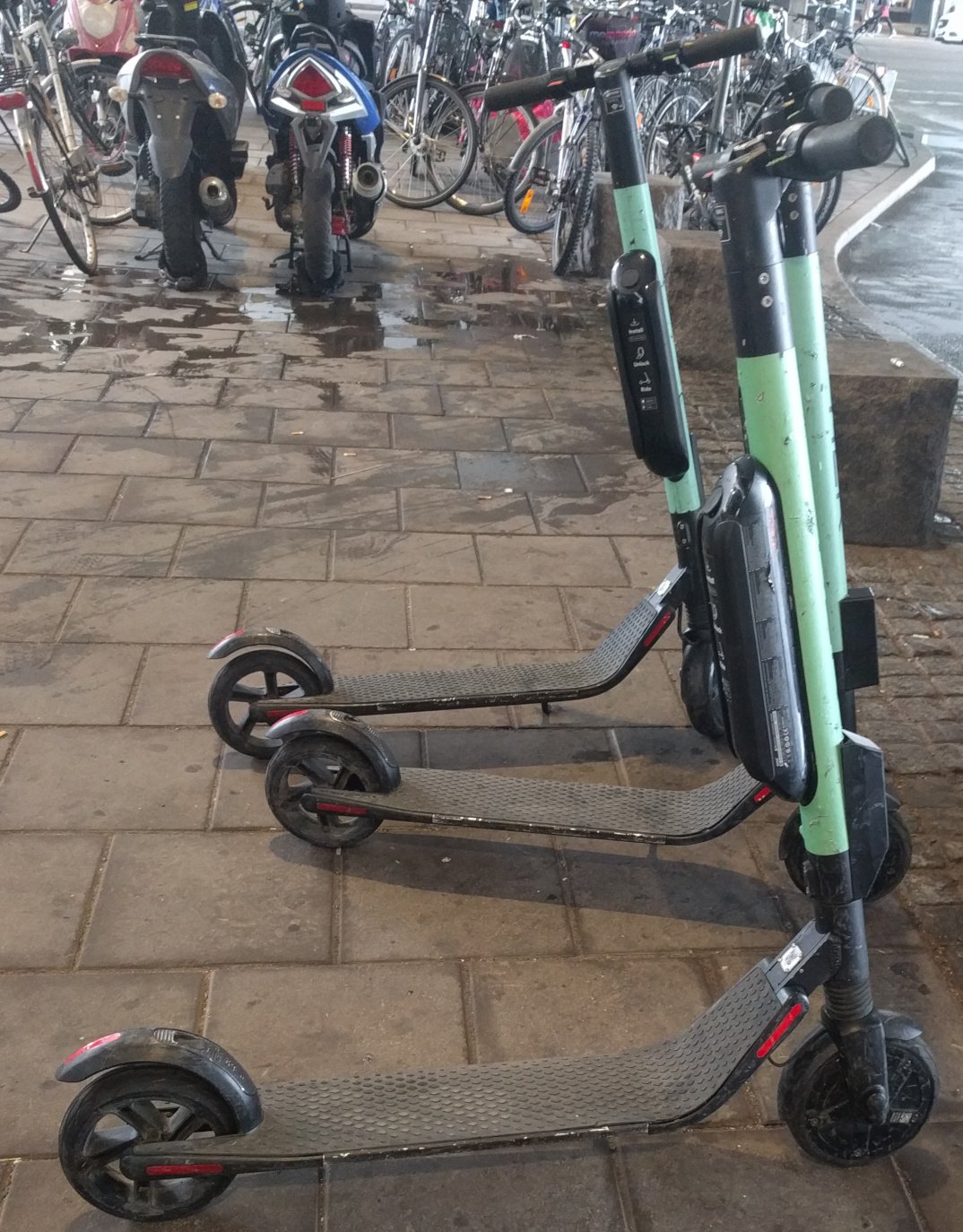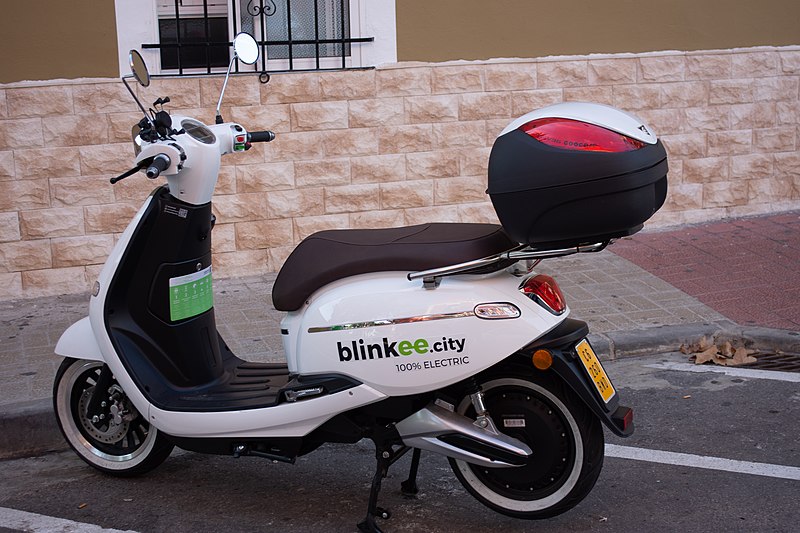Some advice for beginners on pay-as-you go e-scooters
I was supposed to help some colleagues with their first experiences on pay-as-you go e-scooters this week, weather permitting. Well the weather was not cooperating, but I decided to write down some things I was going to tell them:
Use a helmet and possibly other protection at least in the beginning
The big problem with e-scooters even if you are used to bicycles, is the small wheel size. They can dig themselves into holes and stop at curbs, if the height difference is bigger than half the diameter of the front wheel. They also do not turn that smoothly beyond a certain angle. So a helmet can be good in the beginning!
Spread your feet out on the board
Put the balls of your feet as close to the front and back (diagonally) as possible, and angle them out to the sides (but still comfortable). For example front left and rear right. In that way you have the best balance and also the most weight shifting options.
Learn to jump off on the right side!
An e-scooter is actually in at least one way safer than a bicycle, and that is that you can dismount with ease and so place yourself further away from danger. It can also be used as a breaking method.
In countries with right hand traffic, the correct side to practice dismount on, is the right hand side of the scooter. The reason for this is that if you would dismount on the left hand side in a critical situation, you're basically jumping into the way of any oncoming bicycle or car. I've been close to doing that mistake, when a lady cyclist veered into my lane going head-on, while she was texting on her phone.
Keep your left index finger coiled around the handle at all times
Many scooters have a hand brake on the left hand side and you should favor those scooters, I believe, that do have one. If you ride with all fingers on the brake handle, your grip of the handlebar itself will be tenuous. Chances are that the times you really do need to brake will be in moments of instability and forces will try to pry your grip off the handlebar. By keeping the index finger on the handlebar you still have enough finger power on the brake lever while having good purchase on the steering bar itself.
When you start using the scooter, test the brakes. On some scooters the brake handle travels so far in towards the handlebar while braking that you'd pinch your index finger with the brake handle if you kept the finger around the handle, so obviously you can't have your index finger there in that case.
Scooters with the batteries in the steering bar will hit your shins
Scooters with the batteries in the steering bar are front heavy and lack mass in the rear so as you're leading the scooter beside you, there will be times when you turn or go up or down when the rear weel will lose contact with the ground and the board will come swinging at you and hit your shins. Ouch. You have my sympathies.




